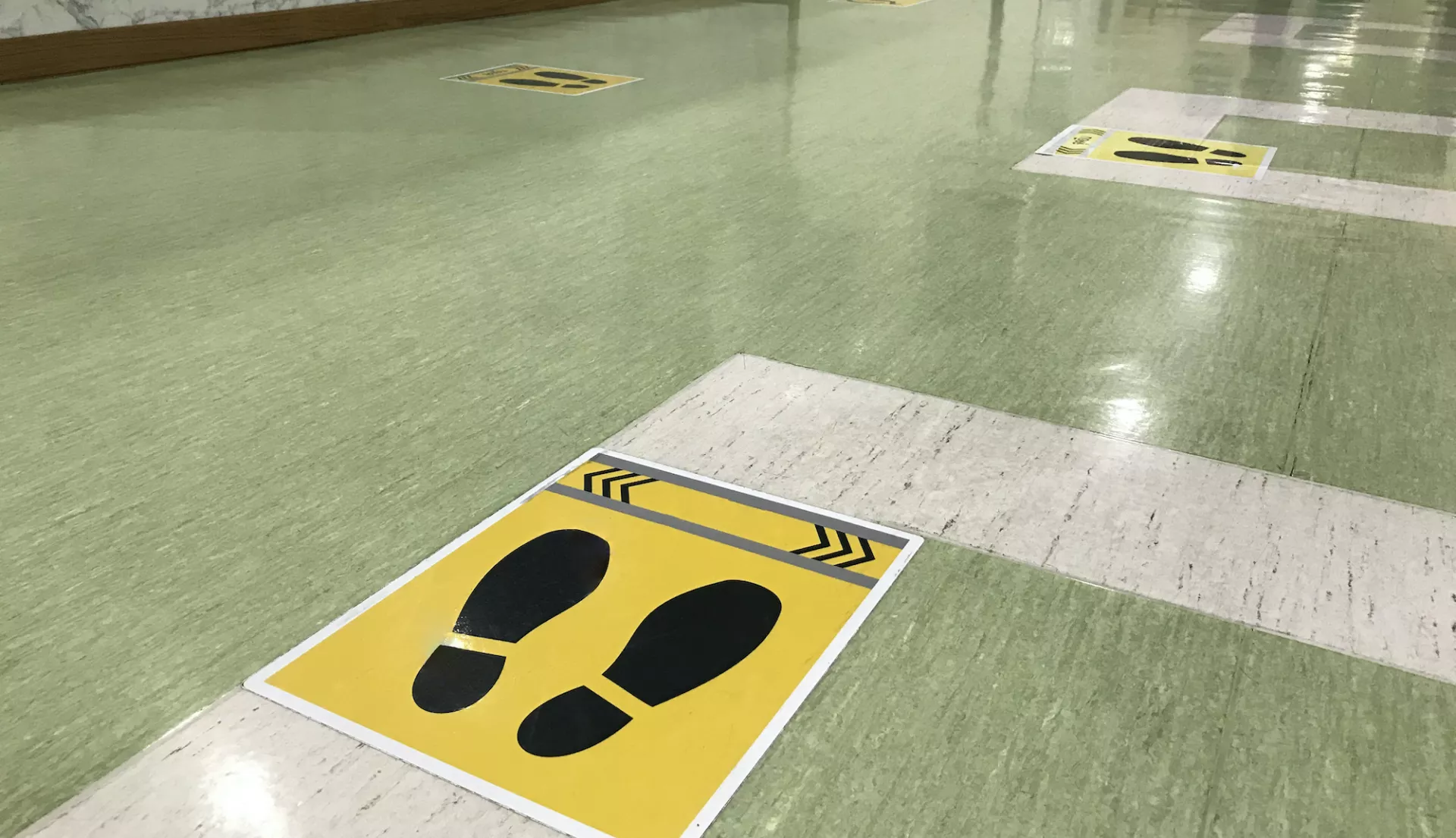Key Takeaways
- The Centers for Disease Control and Guidance now says students can stay 3 feet apart in the classroom while wearing masks, but keep 6 feet apart during other school activities.
- Given the differences in types of school environments, new virus variants, and uneven mitigation compliance, NEA urged the CDC to provide a more detailed rationale for the change.
- While social distancing is one important strategy, all mitigation measures including vaccinations, wearing masks, hand-washing, healthy school buildings, and a system of testing and tracing need to be prioritized.
The Centers for Disease Control and Prevention (CDC) updated its guidelines for public schools on Friday, now stating that students can safely sit just 3 feet apart in the classroom as long as they wear masks. This is a major revision from the 6-foot standard that the CDC has until now been urging and in fact, referred to as “required” in communities with substantial to high transmission in its February 12 guidance.
The new 3 feet standard applies only in the classroom. The agency said 6 feet is still needed at other school activities, including lunch (during which removing masks is necessary), sporting events, assemblies, or chorus practice, and in common areas such hallways and school lobbies. Educators and other adults should continue to stay 6 feet from one another and from students, the CDC said. The CDC also did not change its definition of “close contact,” meaning that students who are seated less than 6 feet from a classmate who tests positive for COVID-19 should be identified as close contact and required to quarantine.
CDC Director Dr. Rochelle Walensky said the revised recommendations are a “roadmap to help schools reopen safely, and remain open, for in-person instruction.”
The CDC also removed its recommendations for plastic shields or other barriers between classroom desks, stating that evidence of their effectiveness in preventing transmission was at best scarce. In the updates to its guidance, the CDC also highlighted the importance of ventilation as part of maintaining healthy buildings and added guidance on intervening to control COVID-19 clusters in schools.
The new distancing guidelines apply to all grade levels. The CDC cautioned, however, that in communities where COVID transmission is high, middle and high school students should remain at least six feet apart unless the school is cohorting students.
Responding to the new guidelines, NEA President Becky Pringle urged the CDC to provide far more detail about why it thought the revision was necessary at this time given inconsistent mitigation compliance, ongoing shortage in critical health and safety resources, and the emergence of potentially more transmissible variants of the virus.
"We are concerned that the CDC has changed one of the basic rules for how to ensure school safety without demonstrating certainty that the change is justified by the science and can be implemented in a manner that does not detract from the larger long-term needs of students," Pringle said. "In the face of new variants and a race to make vaccinations widely available, this is not the time to let down our guard."
Focus on All Mitigation Measures
Distancing is just one of many important mitigation strategies, Pringle added. "We must continue to prioritize ...vaccinations, wearing masks, hand washing, healthy school buildings and a system of testing, tracing, and quarantining."
Dr. Lawrence Kleinman, a professor of pediatrics and global urban public health at Rutgers University in New Jersey, told The Associated Press on Friday that 3 feet between students in a classroom could be safe if the school is doing "everything right," which is unlikely. He added that he currently would not send his daughter to a school that adopts the new distancing guidelines.
Too many schools - especially those in large urban districts - still do not have the necessary resources to do "everything right." Making matters potentially a lot worse, these districts could be in states led by politicians who have a long shameful record of downplaying the severity of the virus.
Earlier this month, Texas Gov. Greg Abbott, ignoring the advice of every reputable public health expert, lifted the statewide face mask mandate, leaving local jurisdictions with little leverage beyond encouraging their residents to continue to do so.
The Texas State Teachers Association (TSTA) on Friday urged Abbot to reinstate the mandate in light of the CDC's new social distancing guidelines.
This social distancing change also will increase the importance for all districts to practice other COVID-19 mitigation measures," TSTA President Ovidia Molina said.
"We're concerned about the CDC’s change from six to three feet for social distancing guidelines for public schools, especially in districts that have removed their masking requirements for students and employees. We agree with the CDC that students and school staff must be masked, and we call for Gov. Abbott to reinstate his mask mandate, at least for all public schools."
A lack of commitment to critical mitigation measures - and the resources necessary to implement them - will only delay what every educator, student, and family wants: the safe return across the nation of in-person teaching and learning.
"We welcome the push to provide for widespread testing and vaccination, and that all schools will have the funding they need to fully implement all of the mitigation measures consistently and with fidelity," Pringle said. "We are so close to being able to ensure that all our schools can be so much safer."


